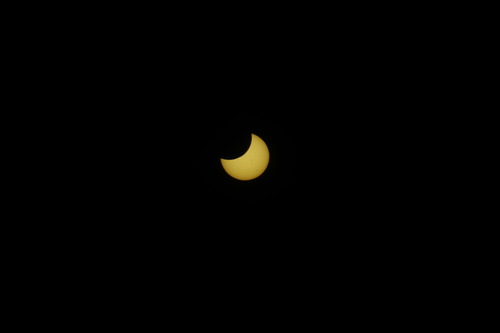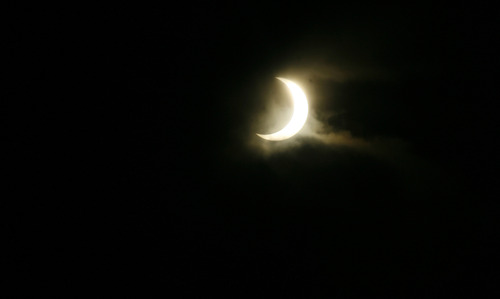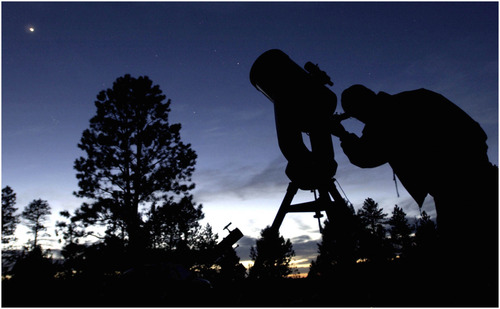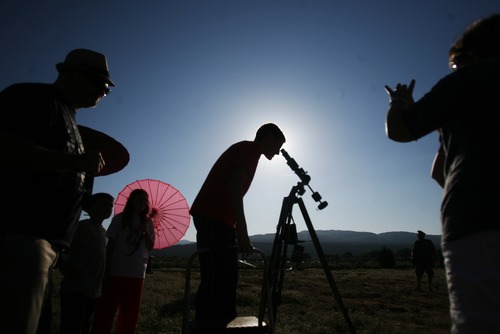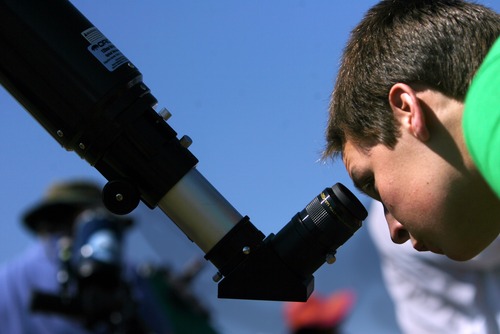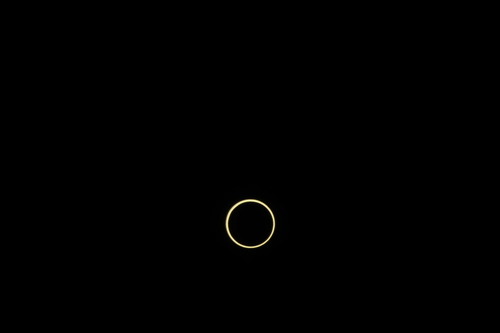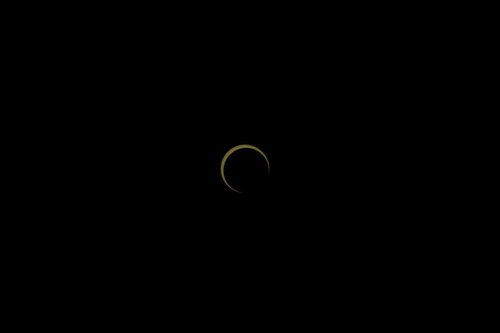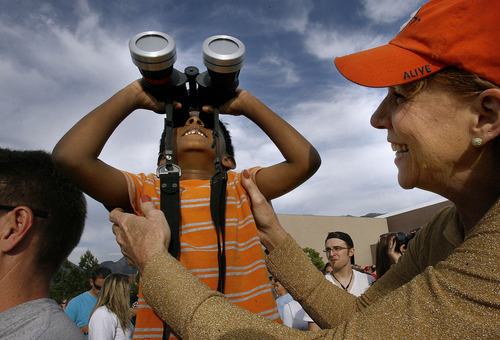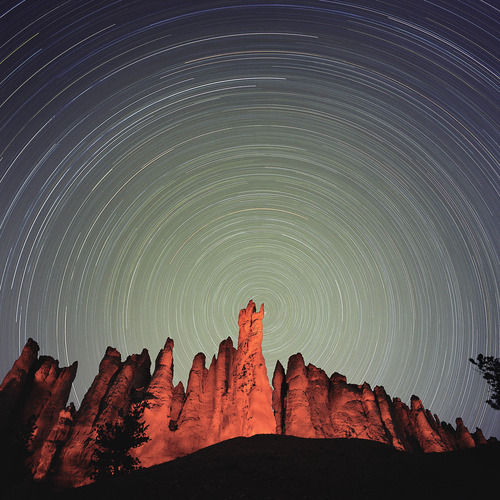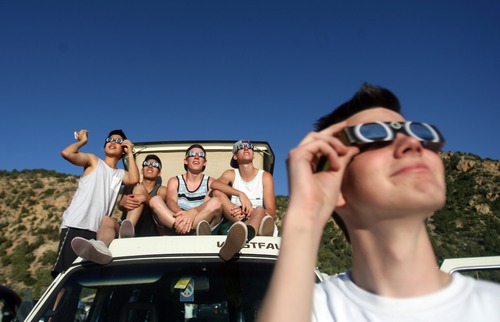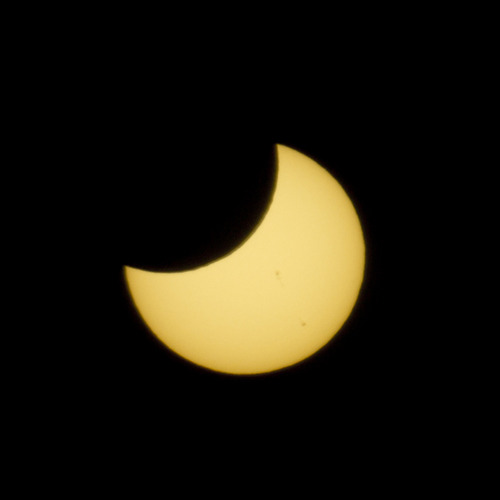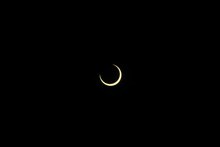This is an archived article that was published on sltrib.com in 2013, and information in the article may be outdated. It is provided only for personal research purposes and may not be reprinted.
A night under the stars can lead to incredible memories.
Maybe it's a magical night for a couple, a pivotal moment in a child's education or simply a mind-expanding evening for a stargazer.
As the summer winds down, it's not too late to take advantage of the gorgeous views Utah's skies have to offer.
Here are 10 of the best spots, near and far, to catch a glimpse of the cosmos.
Wasatch Front:
The University of Utah South Physics Observatory • The U.'s Department of Physics and Astronomy holds a free, public star party every clear Wednesday night on the roof of the south physics building on campus. The city lights can hamper some naked-eye visibility, but the telescopes allow for some great views of the night sky. To see whether the observatory is open, visit web.utah.edu/astro/.
Stansbury Park Observatory Complex • This is owned and operated by the Salt Lake Astronomical Society — which also hosts public star parties at various Harmons grocery stores — and home to some of the state's larger-diameter telescopes. During free, public star parties, local amateur astronomers will set up their telescopes to let viewers check out the moon, planets and other celestial wonders. Even if there isn't a star party happening, the nearby field offers a decent escape from most city lights and a wide view of the night sky.
Emigration Canyon • Head 4 or 5 miles up the canyon road and park at one of the many pull-outs along the roadway. Lie on top of your hood or bring some lawn chairs. Light pollution from the valley is still present, but it fades quite a bit here. Remember to bring a blanket, as it can get chilly even during the summer. It's a great place to watch for meteors and identify constellations.
Antelope Island • The state park offers more than salty water and bison. The west side of the island provides shelter from some of the city light pollution, and the ability to camp overnight allows for uninterrupted viewing time. The Ogden Astronomical Society hosts star parties at the White Rocks Bay Trailhead regularly. The next one is Saturday, Sept. 7, beginning at 6 p.m. For more information, visit http://www.ogdenastronomy.com.
Brigham Young University • The BYU Astronomical Society hosts weekly planetarium shows at 7 and 8 p.m. for $2 in room 465 on the fourth floor of the Eyring Science Center. On clearn nights, the shows are followed by a public night sky observation, with society members manning telescopes and answering questions. The Orson Pratt Observatory is open to public tours. The society also hosts monthly stargazing parties at the observatory on West Mountain. For more information, visit here.
Worth the drive:
Natural Bridges National Monument • This remote locale 45 minutes west of Blanding was the first International Dark Sky Park as designated by the International Dark-Sky Association. Here, viewers can see more than 15,000 stars — an urban environment lets you see about 500. On most clear nights, the Milky Way looks like a paint roller took to the sky. Of course, that's because the nearest hotel, restaurant or gas station is 45 minutes away.
Bryce Canyon National Park • The hoodoos here provide intriguing sights by day, but the views are even more spectacular at night. The light pollution at Bryce is minimal, and there are several ranger-hosted star parties throughout the year. Here, the skies are so clear that distant objects — usually only viewable through the powerful telescopes — are visible with a backyard telescopes. Every once in a while, a meteor streaks through the sky so brightly, it's easy to mistake it for a pair of bright headlights.
Cedar Breaks National Monument • The skies are just as promising as those at Bryce Canyon, and the higher elevation actually makes them more visible. There are also fewer visitors, so you'll likely have more opportunities to peer through the telescopes that are set up during the summer months. Rangers offer educational programs about the night sky, and Cedar City is about 35 minutes away.
Salt Flats • The vast expanse of deserted area west of the Salt Lake Valley offers a break from city light pollution and low horizons, allowing for wide open skies. Hop on Interstate 80 and drive west, wrapping around the Great Salt Lake, and head out toward Wendover. Exit when you feel like you're far enough away from city lights and have found a spot where you can park and pull out some lawn chairs. Bring some friends, blankets and snacks and enjoy the night skies.
Near Utah/Idaho border • Taking Interstate 15 north toward the hamlets of Plymouth and Portage can offer some light-pollution-free views of the night sky. The farmland seems to roll on forever in this northernmost neck of Utah, and Gunsight Peak rises along the horizon. Head south to get to Brigham City for restaurants, hotels and gas stations. Otherwise, soak up the starlight and the rolling countryside. —
Stargazing etiquette
It takes the human eye at least 30 minutes to adapt to the dark, and even a split second of bright light can reset that clock, according to Patrick Wiggins, NASA/JPL Solar System Ambassador to Utah and a member of the Salt Lake Astronomical Society. So here are some stargazing "dos and don'ts" to make sure you don't anger your fellow stargazers.
DON'T:
Don't wear glow-in-the-dark jewelry or clothing.
Don't bring flashlights. If you must, cover them in red cellophane and only point them downward. The rule of thumb: Red light is preferable to white light, but having no lights is best.
When driving to a stargazing spot, don't point your headlights toward telescopes. While safety is paramount, approach with only your parking lights.
Don't build a fire. Use lanterns or other light-producing appliance.
DO:
Be polite and wait your turn at a telescope.
Ask questions about equipment and what you're seeing in the night sky.
If you are at a telescope and don't see anything, tell someone. The object may have moved out of view or someone may have bumped the telescope. Don't be shy.
Watch your children and pets around telescopes, which can cost more than $10,000.
Have a good time and enjoy the night sky.
Source: Patrick Wiggins, NASA/JPL Solar System Ambassador to Utah


